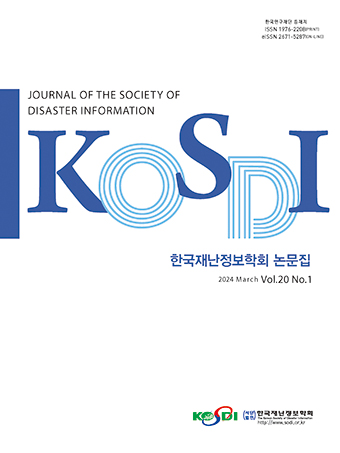Original Article
Abstract
References
Information
Purpose: Research and development of high-strength concrete enables high-rise buildings and reduces the self-weight of the structure by reducing the cross-section, thereby reducing the thickness of beams and slabs to build more floors. A large effective space can be secured and the amount of reinforcement and concrete used to designate the base surface can be reduced. Method: In terms of field construction and quality, the effect of reducing the occurrence of drying shrinkage can be confirmed by studying the combination of low water bonding ratio and minimizing bleeding on the concrete surface. Result: The ease of site construction was confirmed due to the high self-charging property due to the increased fluidity by using high-performance water reducing agents, and the advantage of shortening the time to remove the formwork by expressing the early strength of concrete was confirmed. These experimental results show that the field application of ultra-high-strength concrete with a design standard strength of 100 MPa or higher can be expanded in high-rise buildings. Through this study, we experimented and evaluated whether ultra-high-strength concrete with a strength of 130 MPa or higher, considering the applicability of high-rise buildings with more than 120 floors in Korea, could be applied in the field. Conclusion: This study found the optimal mixing ratio studied by various methods of indoor basic experiments to confirm the applicability of ultra-high strength, produced 130MPa ultra-high strength concrete at a ready-mixed concrete factory similar to the real size, and tested the applicability of concrete to the fluidity and strength expression and hydration heat.
연구목적: 고강도 콘크리트 연구개발은 건축물의 고층화를 가능케 하고, 단면 축소로 구조물 자중이 경감되어 보와 슬래브 두께를 얇게 함으로 보다 많은 층수를 축조할 수 있었으며, 넓은 유효공간이 확보되고, 기초 저면 지정에 사용된 자재 및 철근과 콘크리트 양을 절감하는 효과를 가져올 수 있다. 연구방법: 현장시공 및 품질측면에서는 낮은 물결합재비 배합를 연구하므로 건조수축 발생 저감 효과를 확인할 수 있고, 콘크리트 표면의 블리딩 최소화 연구를 통하여 그 효과를 검증할 수 있다. 연구결과: 고성능감수제 사용에 의한 유동성 증진으로 자체 충전성이 높아 현장 시공 용이성을 확인하고, 콘크리트의 조기 강도 발현으로 거푸집 탈형 시간을 단축시킬 수 있는 장점을 확인하였다. 이러한 실험결과 자료는 초고층 건축물에서는 설계기준강도 100MPa급 이상의 초고강도콘크리트의 현장 적용이 확대될 수 있다. 본 연구를 통하여 국내에서도 120층 이상의 초고층 건축물 현장 적용성이 고려된 130MPa급 이상의 초고강도 콘크리트를 현장에서 실제 적용 가능성 여부를 실험, 평가하였다. 결론: 본 연구에서는 초고강도의 현장적용 가능성을 확인하기 위하여 여러 가지 방법의 실내기초 실험으로 연구되어진 최적의 배합비를 찾아서 모의부재 예비 실험 후 실물크기와 유사한 모의부재에 130MPa 초고강도콘크리트를 레미콘 공장에서 생산하여 현장 펌프압송 타설하고, 콘크리트의 유동성 및 강도 발현과 수화열에 관하여 현장 적용성을 실험한 연구다.
- Cho, C.-H. (2023). "A study on behavior changes in workers who completion of experiential safety education." Journal of the Society of Disaster Information, Vol. 19, No. 1, pp. 161-172.
- Cho, C.-H. (2023). "A study on the necessity of reducing industrial accidents through the introduction of the fair wage system." Journal of the Society of Disaster Information, Vol. 19, No. 1, pp. 1-9.
- Kim, J.-m. (2008). Study on the Basic Properties of Ultra-high Strength Concrete according to Types of Cement and Admixtures." Domestic Master's Thesis, Gyeongguk University.
- Lee, J.-s. (2011). Early Estimation of Ultra-high Strength Concrete Strength Using Hot Water Curing. Domestic Master's Thesis, Dankook University Graduate School.
- Lee, T.-G. (2011). "Correlation between internal water vapor pressure and bursting characteristics of ultra-high strength concrete." Proceedings of the Korea Concrete Society Conference, Seoul, Vol. 2011, No. 11, pp. 259-260.
- Son, Y. (2005). Experimental Study on the Basic Properties of Ultra-high strength Concrete with a Design Standard Strength of 100 MPa." Domestic Master's Thesis, Dankook University.
- Yang, D.-i. (2006). On-site Application to 130 MPa Ultra-high Strength Concrete. Domestic Doctoral Thesis, Dankook University.
- Publisher :The Korean Society of Disaster Information
- Publisher(Ko) :한국재난정보학회
- Journal Title :Journal of the Society of Disaster Information
- Journal Title(Ko) :한국재난정보학회논문집
- Volume : 20
- No :1
- Pages :20-31
- DOI :https://doi.org/10.15683/kosdi.2024.3.31.020




 Journal of the Society of Disaster Information
Journal of the Society of Disaster Information







